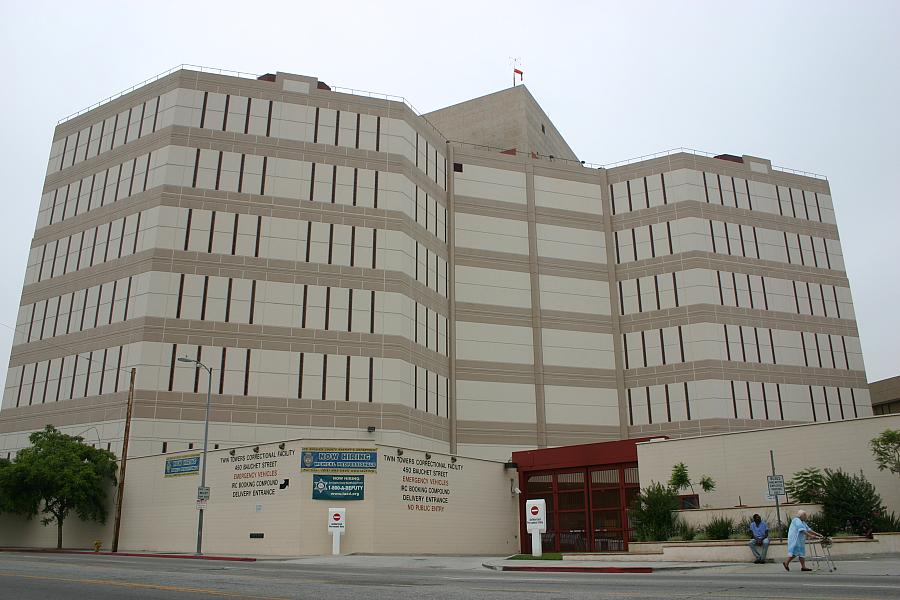Los Angeles is locking up more people with mental illness than ever before. Why?

Twin Towers Correctional Facility in Los Angeles.
(Photo via Wikimedia Commons)
In 2015, Los Angeles County launched a diversion program designed to reduce the number of people with mental illness in county jails. But since the program began, the number of people with mental illness in the jail system has substantially increased.
Los Angeles is home to the largest jail system in the country — including the Twin Towers Correctional Facility, which the Los Angeles County Sheriff’s Department calls the “nation’s largest mental health facility.”
Over 14,000 people are currently locked up within the county’s jails. According to the sheriff's department, 43% of those people are mentally ill. And 25% of all people incarcerated in Los Angeles jails are homeless. Conditions at Los Angeles county jails have been described as a “human rights disaster” by jail staff.
To alleviate this crisis, the Los Angeles County Board of Supervisors in 2019 tried to replace one of the county’s jails with a mental health hospital. But after critics said the hospital would still functionally be a jail, the board scrapped the $2 billion plan and instead opted to take a “care first, jails last” approach — one that would divert people struggling with mental illness away from jail and into treatment.
One way the county has tried to accomplish this is through diversion programs run by the Office of Diversion and Reentry (ODR). One of the ODR’s programs aims to “reduce the number of incarcerated people in the LA county jail who have mental and/or substance use disorders by removing them from jail through various court interventions or through pre-arrest or pre-booking diversion, and providing them with care and housing.”
Both reporters and government officials have touted the program as a success. ODR states that it has released over 8,100 people from jail and into community services since launching in 2015. Yet data from the Los Angeles County Sheriff’s Department show that the number of people with mental illness in county jails has actually increased each year since the diversion program began.
Why are more people with mental illness incarcerated in county jails when the county has launched multiple initiatives aimed at decreasing that very population in recent years? If the ODR has diverted over 8,000 people struggling with mental illness and substance use away from jail, how can hundreds more people with mental illness be in jail? Could the program be working as intended, but the number of people with mental illness who come into contact with the criminal legal system has also increased exponentially during that time? Is the data put forth by the ODR incorrect? Or is there another reason more people with mental illness are incarcerated in county jails than ever before? I plan to answer these questions.
The diversion program has hit capacity in recent months, yet funding to expand the program has stalled. As further negotiations over the program’s budget get underway, the county ought to take the growing mentally ill jail population into account.
My goal with this project for the 2022 Data Fellowship is to determine why so many more people with mental illness are being incarcerated in Los Angeles County jails, despite the county’s efforts to shrink that number. My hope is that I can help identify solutions that would decrease the number of people with mental illness incarcerated in Los Angeles and help equip advocates and government officials with the necessary information to fund initiatives that truly work.
I will be using data from the Los Angeles County Sheriff’s Department and the Los Angeles County Department of Health to shine light on the issue. I plan to write a series of stories that will dig into the data, answer these questions, and show how the increasing incarceration of people suffering from mental illness impacts people.

